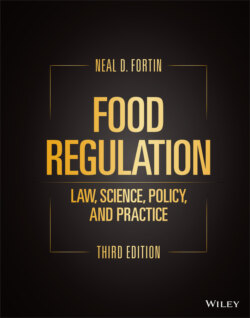Читать книгу Food Regulation - Neal D. Fortin - Страница 250
5.3.3 Dietary Guidance
ОглавлениеDietary guidance consists of statements that address a role of general dietary patterns or general categories of foods in maintaining good health. For example, “A diet rich in fruits and vegetables is good for your health,” is dietary guidance. “Five servings of fruits and vegetables a day are recommended for good health,” is dietary guidance.
“Dietary guidance” is not a legal term, so you will find it used in a variety of ways in different contexts, which can be confusing. In the literal sense, all food‐related health claims are a form of dietary guidance. For the sake of clarity, consider “dietary guidance” as being only claims that do not satisfy either element of the “health claim” definition (do not mention a specific substance or food and do not mention a disease or health‐related condition).
Claims that relate to a disease or a specific health‐related condition are likely to be health claims rather than dietary guidance.12 For example, the statement, “Diets rich in fruits and vegetables may reduce the risk of some types of cancer,” on the labeling of fruits and vegetables is a health claim.13 (However, sometimes a specific determination whether a statement is a health claim may have to be made based on the specific wording and the context of use. For example, the above claim on a vitamin C supplement labeling is dietary guidance.)
On the other hand, statements about a role of a specific food or substance in maintaining good health are likely to be structure/function claims rather than dietary guidance. For example, “Calcium is good for you,” is a structure/function claim.14
While dietary guidance may be used on food labels without FDA approval, bear in mind that dietary guidance statements must meet the requirements for being truthful and nonmisleading.
